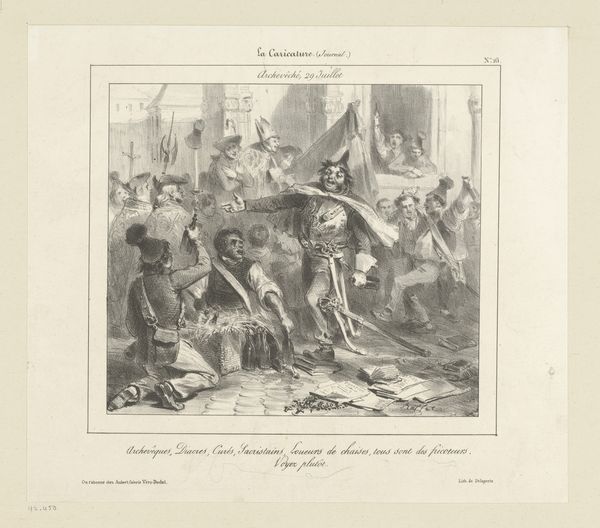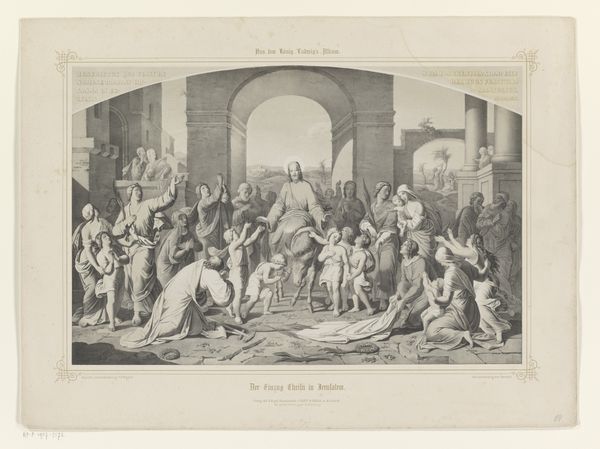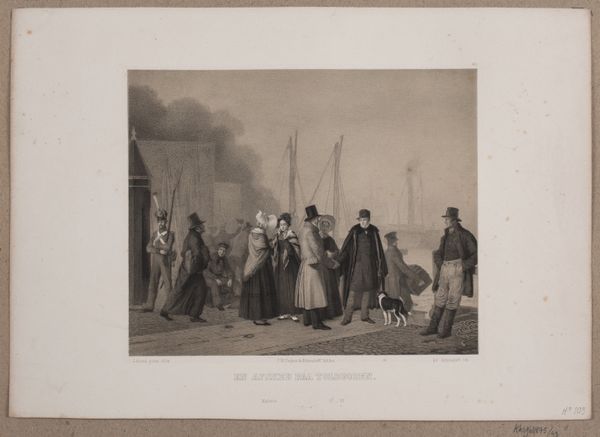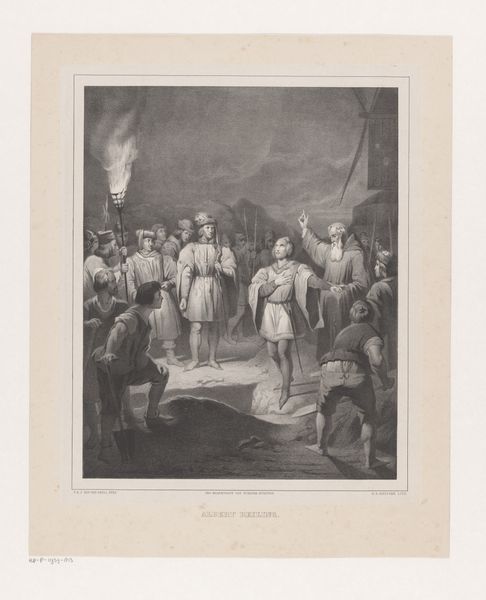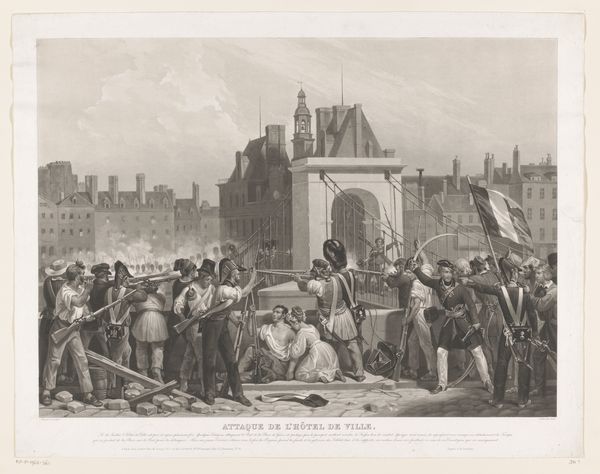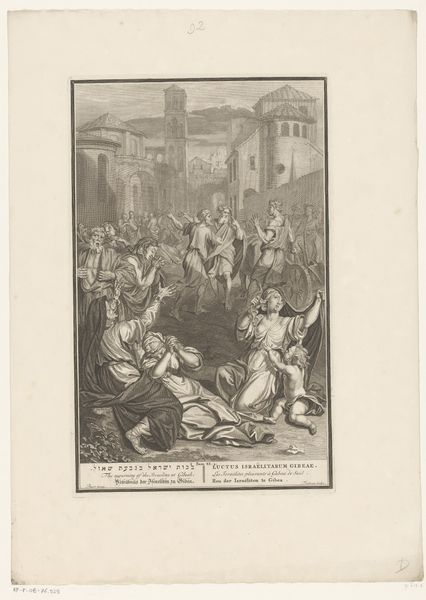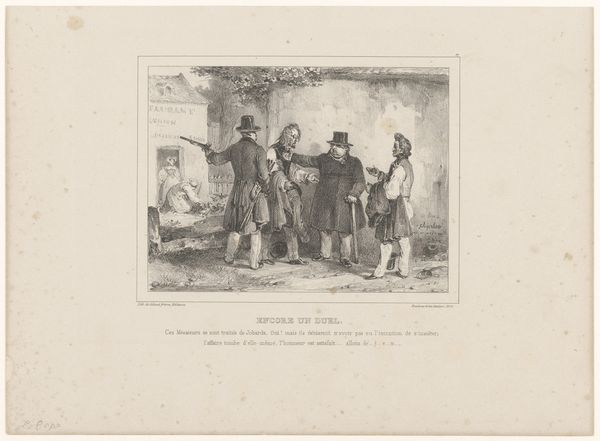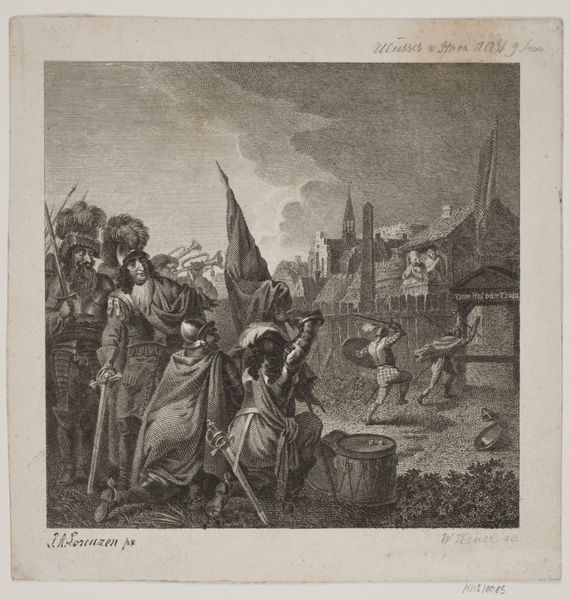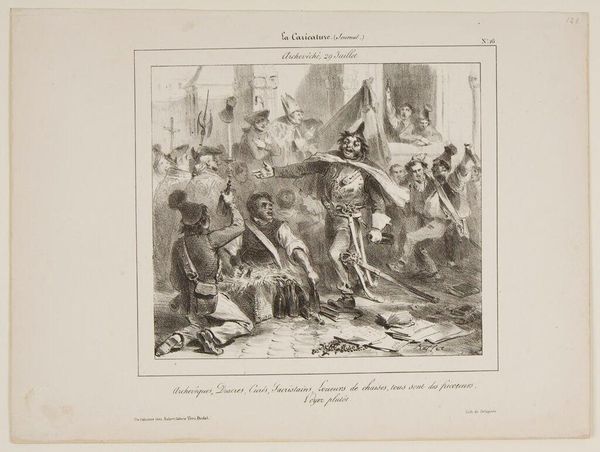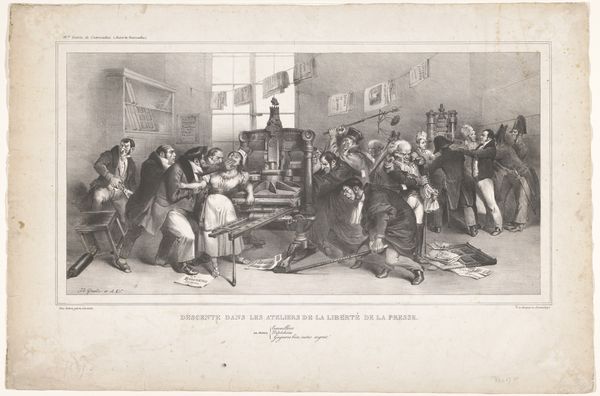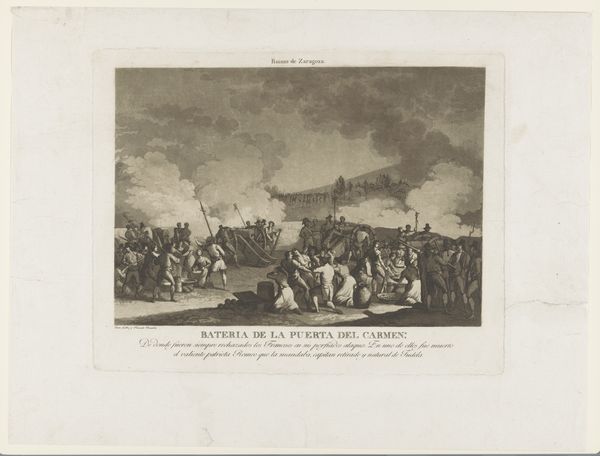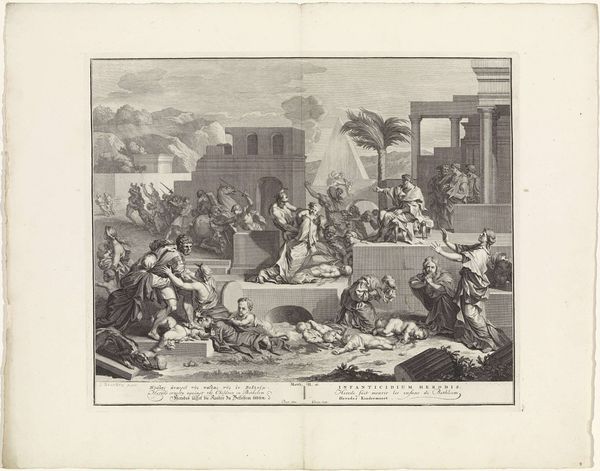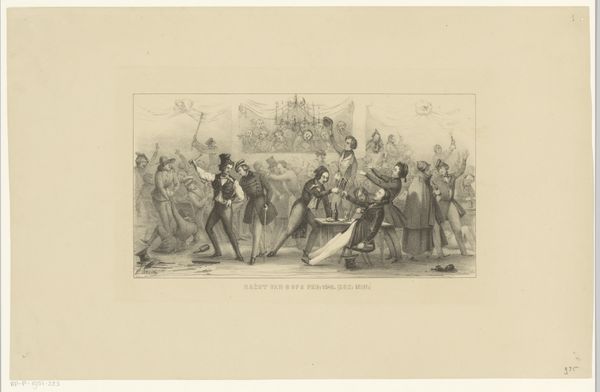
print, engraving
#
narrative-art
# print
#
figuration
#
historical photography
#
romanticism
#
19th century
#
line
#
cityscape
#
history-painting
#
engraving
Dimensions: height 503 mm, width 643 mm
Copyright: Rijks Museum: Open Domain
Editor: We're looking at "Begrafenis van slachtoffers van de Julirevolutie," or "Burial of Victims of the July Revolution," an 1831 engraving by Jean Pierre Marie Jazet. It’s intensely melancholic; a chaotic grief scene made stark and still in black and white. What emotions or narratives rise to the surface for you when you look at it? Curator: Ah, yes, it plunges you right into the thick of it, doesn’t it? It's not just a burial; it’s a visual echo of the revolution itself. The grief feels raw, unfiltered – almost performative. It makes me wonder, doesn’t it you? About the way revolutions often romanticize death in the name of liberty. Jazet captures this…ambivalence, I think, quite powerfully. Editor: The “romanticize” part resonates with me; I was thinking about its visual similarities with Delacroix's “Liberty Leading the People.” Curator: Precisely! That shared visual language… Did Jazet want to emulate Delacroix? And if he was, how did that impact what he chose to foreground – and, significantly, to background – within this commemorative snapshot? How can we tell what he was *really* feeling? Editor: Do you think there's a sense of political commentary embedded in the engraving? Curator: Oh, absolutely. By presenting this very public display of mourning, the piece asks: "What was the revolution for? And who, really, benefits from it?" There's an underlying tension here, a silent scream almost. What do you feel *now*, looking closely at those background figures and their indifferent faces? Editor: I hadn't noticed it so much before! It suggests disillusionment. Almost like history repeating itself. That’s really stuck with me. Curator: Good. The silent screams, eh? The best art stays with you just so… Thanks for pointing me to the screaming background! Editor: Thank you. I feel I can engage much deeper with 19th-century prints moving forward!
Comments
No comments
Be the first to comment and join the conversation on the ultimate creative platform.
